Reading scaffolds are a great way to provide that extra layer of support for students who may struggle to access grade level text. As teachers, we want to see all our students reach grade level expectations and beyond. But the hard reality is so many of our students come to us well behind that benchmark. Regardless of where students comes in at, it’s the expectation of us, the teacher, to help that student access grade level content. But how do you do that?
Readers experiencing grade level difficulties often miss out on grade level content because they are unable to access it independently. Whether a teacher makes a purposeful choice like providing a lower leveled text, or something without of a teachers control takes place such as students are pulled for interventions or supports during grade level content, there are never ending list of reasons our emerging readers miss out on key grade level concepts. Therefore it becomes even more important we are equipped with some reading scaffolds that can help all our students access grade level content.
Scaffolding reading
What does it mean to scaffold reading? Scaffolding by nature means to break up learning into chunks. But to scaffold reading for our students who experience the most struggle, simply breaking up grade level text won’t help them magically be able to decode and comprehend it. There are a variety of teaching techniques and strategies that can be carefully planned for throughout your whole group lesson. These techniques include pre-teaching important vocabulary concepts, previewing the text and/or concepts before reading, practice multisyllabic decoding strategies for reading words within the text, and providing a modeled think aloud for the students as you experience the text together.
You can read more about whole group techniques you can use to scaffold essential complex reading at Edutopia.
Reading scaffolds
In this blog post we are going to focus on 5 specific strategies you can use in your classroom as a scaffold to help all your students access grade level content. Each of these reading scaffolds provides a different level of support. You may decide to choose different scaffolds at different times, depending on your instructional outcome for student achievement and behavior. Let’s jump into those 5 reading scaffolds.
Listening to reading
There are so many great benefits, along with so much research, behind listening to reading. We know students must be able to comprehend a story they hear orally before they can understand a story they are decoding on their own. This oral language comprehension piece alone is a large enough reason to provide students with opportunities to listen to reading.
Students who struggle to access grade level text benefit from listening to the text either before or after experiencing it in class. This gives them access to the content knowledge without having to decode the words themselves. By listening to the text before reading it in class provides a student an opportunity to begin building up background knowledge around the topic. When listening to reading after they’ve experienced it in class it helps to increase fluency but also to deepen their understanding of the content.
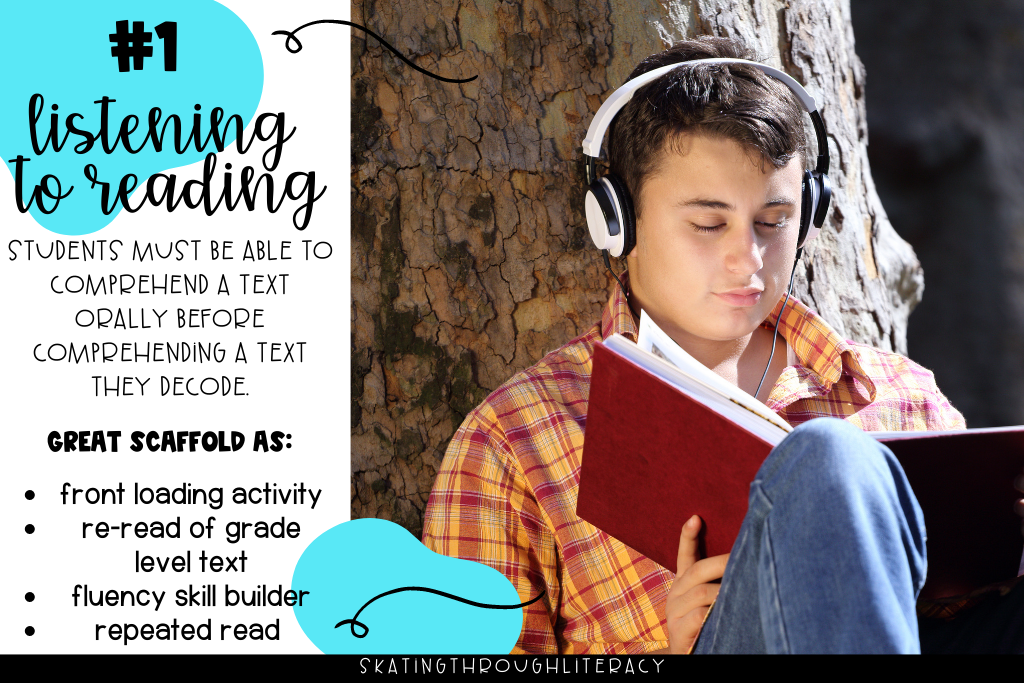
Beyond utilizing listening to reading as a scaffold to grade level texts used within a whole group setting, this strategy can also be powerful for a variety of other texts within a classroom. Students would gain benefit from listening to reading in many other areas of the classroom as well.
Other ways to use listening to reading:
- station or center within their independent work
- choice of a variety of stories and/or genres
- listening to podcasts or informational pieces about topics of choice or interest
Echo Reading
Echo reading is exactly as it sounds! The student echoes the same reading modeled by a teacher, peer, or other adult. Echo reading is such an effective scaffold because it provides a model for the reader who needs support of reading the text aloud, as well as immediate application of re-reading that same text with corrective feedback. This is particularly helpful for students who may struggle to engage with a text. It also could be beneficial for students who learn best by listening. This is because it combines both the listening and reading side-by-side. Echo reading can also be used as a scaffold for different levels of needs within your classroom. Echo reading partners can read one sentence at a time for those that need strong support, up to an entire page at a time for those that may need less support.
The three most common ways to echo read are:
- Whole class– teacher reads a sentence. The whole class echoes the sentence.
- Partners– Partner one reads a sentence, or a page. Partner two reads the same sentence, or page back.
- Small groups– Teacher reads a sentence or page. The small group reads chorally the same sentence or page back.
Echo reading can also be an effective practice when used as a strategy to reread a text. The reread application provides more practice in developing automaticity with word calling and fluency.
Dyad Reading
Dyad reading is a more structured way to approach partner reading. It is designed to support readers who need support with fluency by purposeful pairings with students with strong reading skills. Students in mixed ability partnerships approach the text together. In dyad reading both partners read at the same time together. This provides support to that reader who is experiencing more fluency struggles.
There are some important tips and tricks to help make sure your dyad reading is continuously successful in the classroom:
- Each pair should consist of one Leader and one Assistant (lead- stronger reader/assistant- weaker reader)
- Each partnership should last only 4-5 days – switch weekly! This is key to keeping your routine lively and effective.
- Each student should experience being a Leader and an Assistant as often as possible
- One book, everyone can see, read together
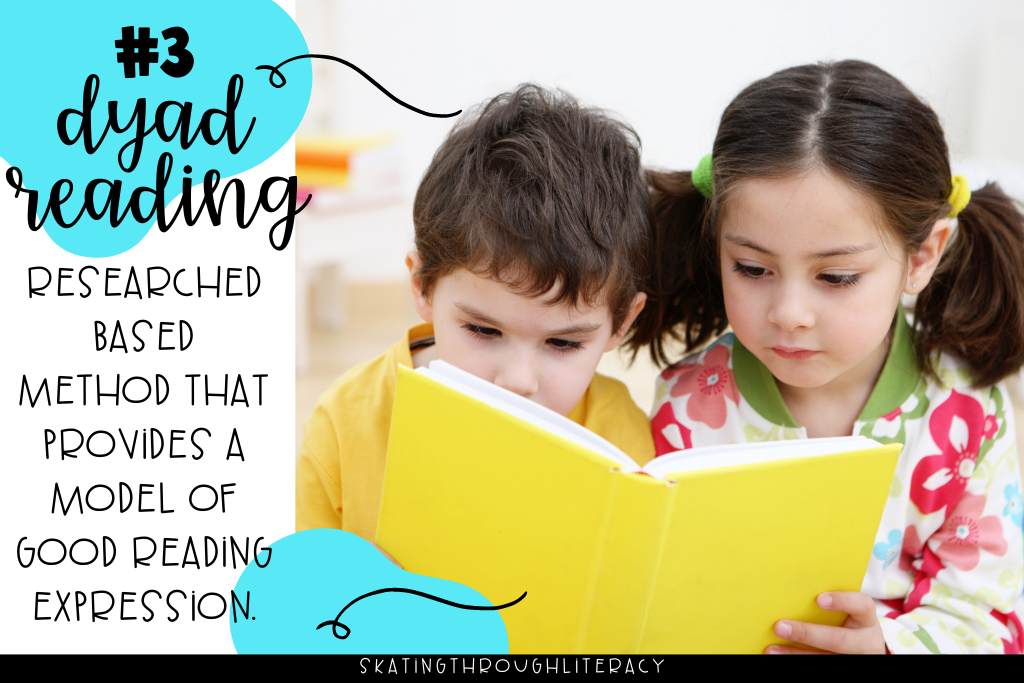
Something interesting I found when researching dyad reading is that the strategy is found to be effective regardless of the perceived instructional reading level of the students. It is found to be most effective when a text used is roughly two grade levels higher than the weaker reader’s level. However, it is still an effective strategy regardless of the text level used.
This is also a great routine that could give students many different choices in what they read during dyad reading. An example of how this might look is you provide the text for day one and day two. Then the assistant might choose their favorite text for day three and four. Finally the coach may get to pick the reading for day 5. The variety of text also helps keep the routine fresh and constantly moving and changing.
Repeated Reading
Repeated reading is such a powerful, yet often forgotten about, strategy that can serve as reading scaffolds. If a text is above a students instructional level, they are going to need multiple exposures to both decode the text on the page and comprehend the passage. By offering students a chance to reread the same text, those skills will continue to improve with each read.
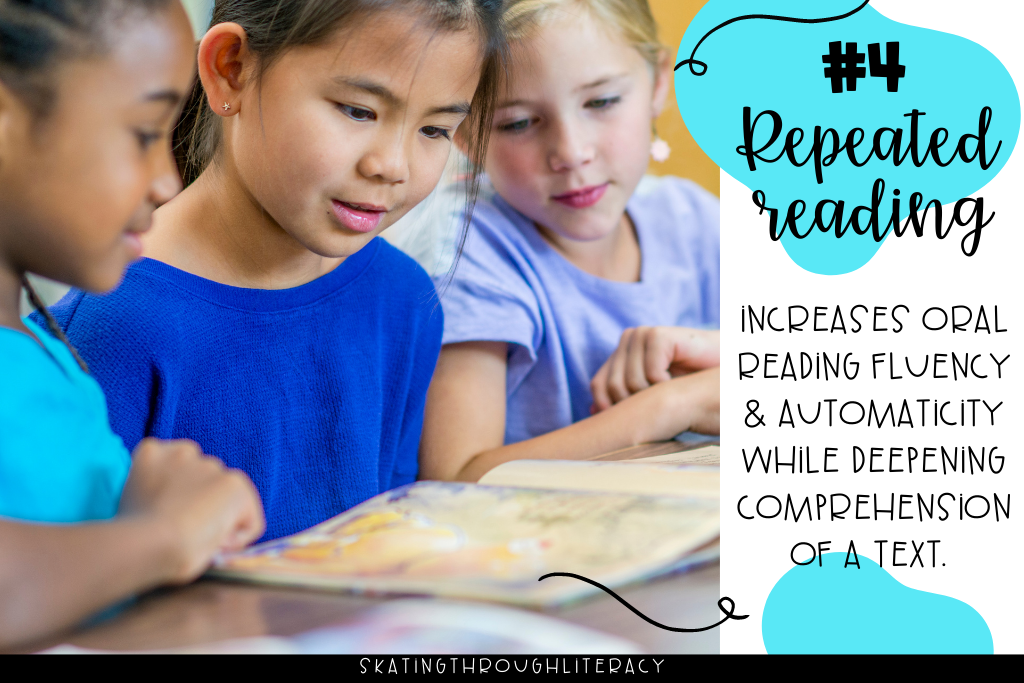
According to Nell Duke, “Rereading is a super strategy. If you had trouble paying attention to both the words and the meaning at the same time, rereading can help you put those two together. Rereading gives students more exposure to words.”
A common complaint I heard from my own students, and from teachers I work with, is that students don’t find any value in repeated reading. It often is accompanied with grumbling and complains. Yet the benefits of repeated reading are so great for our students. This means we as teachers need to find incentives to help overcome the complaints by providing valid and engaging reasons for rereading a text. There are many different purposes you could give your students for repeated reading that could entice them to practice it again and again.
Motivating reasons for rereading:
- Prepare to read selection to a buddy in a different grade
- Prepare to read a selection to an adult classroom volunteer
- Prepare to read a selection to record yourself reading (so many great apps and websites- Seesaw and Flipgrid being two favorites).
- Prepare to read a selection for a class buddy read time (maybe every Wednesday at 10:15 the class has 15 minutes of assigned partner read time where each student shares their prepared reading with their buddy)
- Engaged in Reader’s Theater scripts
These are just a handful of ways to provide context that your students will find valuable for practicing rereading a text.
Ramp Up Reading
A personal favorite strategy of mine for really creating that environment in your classroom that celebrates reading. There are many different phrases and words to call Ramped up Reading. The name is not important; but the strategy of creating that excitement.
Ramp up reading simply means creating some sort of structure for sharing about new reading with your students. This could be in the form of book talks where the teacher previews the newest additions that are going into the classroom library and a little preview on what to find in each. It could also be a teacher sharing the newest book release. This could be a teacher sharing what they are reading and loving at the moment.
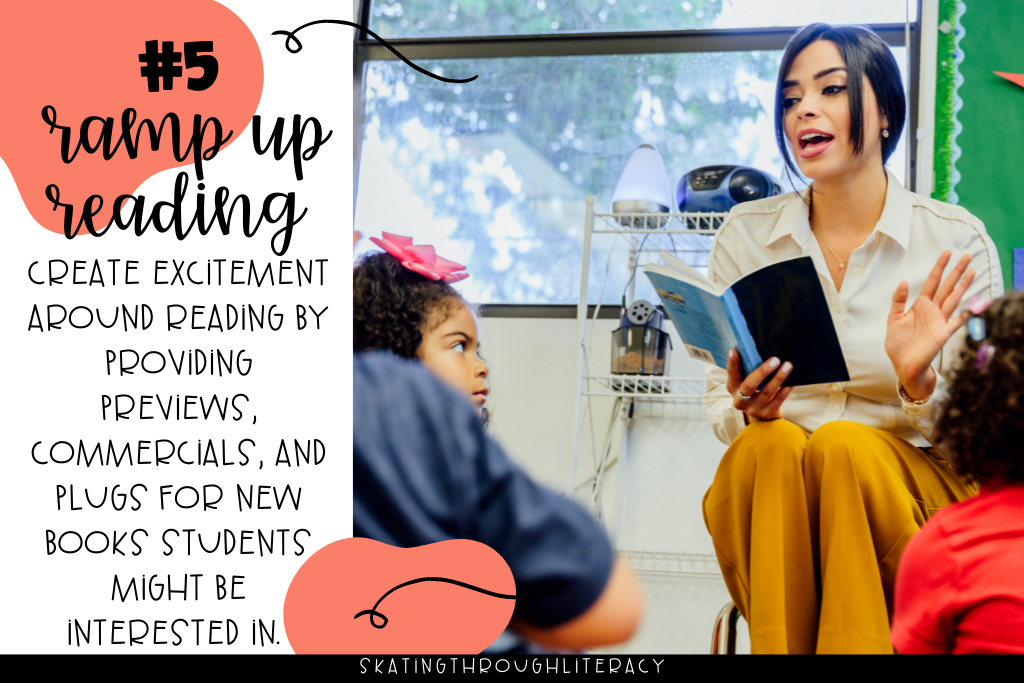
You can add an extra layer of excitement by adding in some fun props. A strategy I learned from social media is adding in wrapping paper or a really fun gift bag. Before sharing new read alouds with the class, I would the book inside a big bright sparkly gift bag and set it on my teacher chair. This signals to the students when they walked in that they would be hearing a new picture book that day. These tiny details go a long way in creating an environment that celebrates and elevates reading.
Beginning the year and creating a culture of learning around books will also help amp this excitement. You can read more about some read alouds I recommend creating some serious hype for in your classroom and activities you can do at the beginning of the year to foster classroom community.
I hope these reading scaffolds have been helpful and inspiring when it comes to supporting your readers. Which of these 5 reading scaffolds are you already using in your classroom? Which do you think could be added to benefit your students access grade level content?

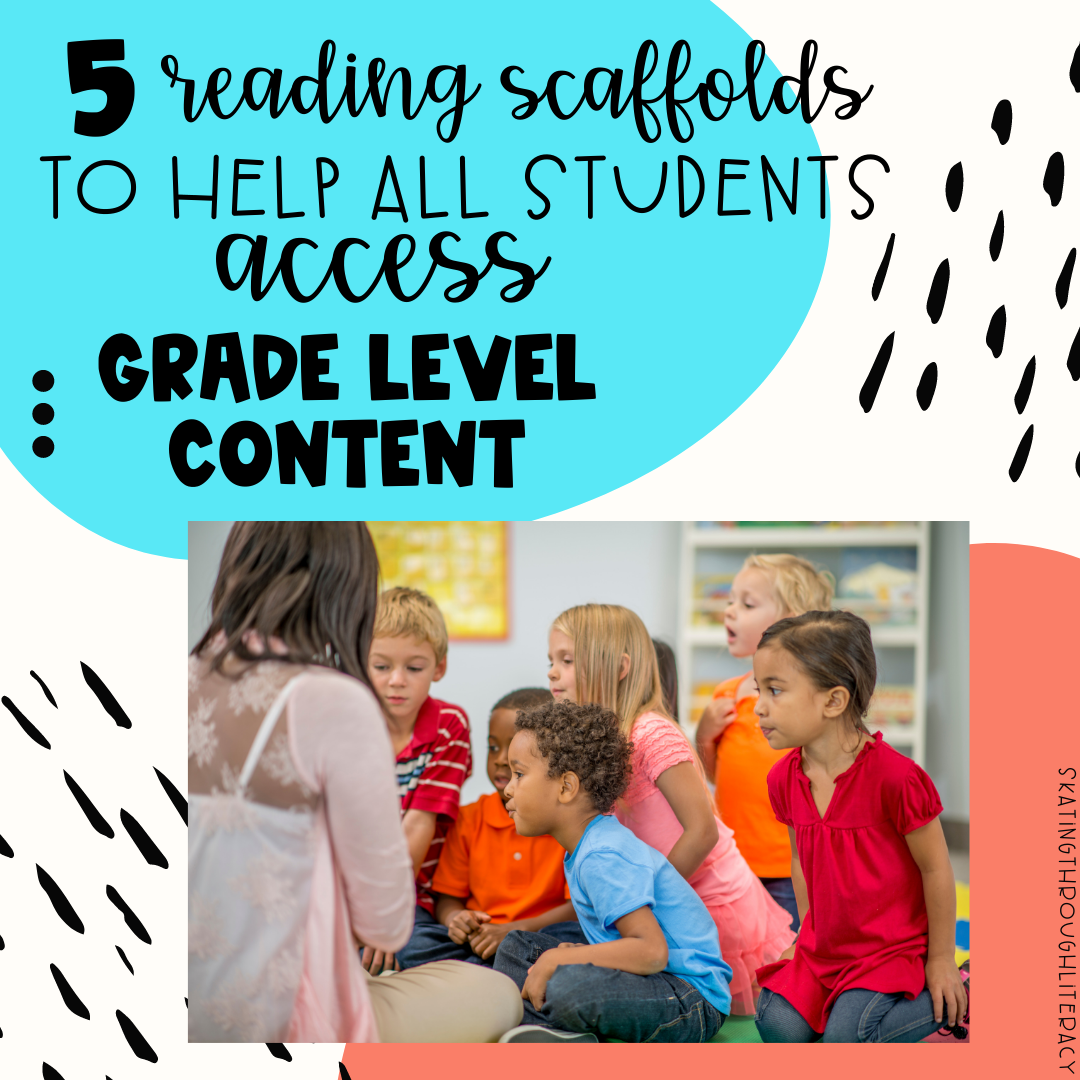
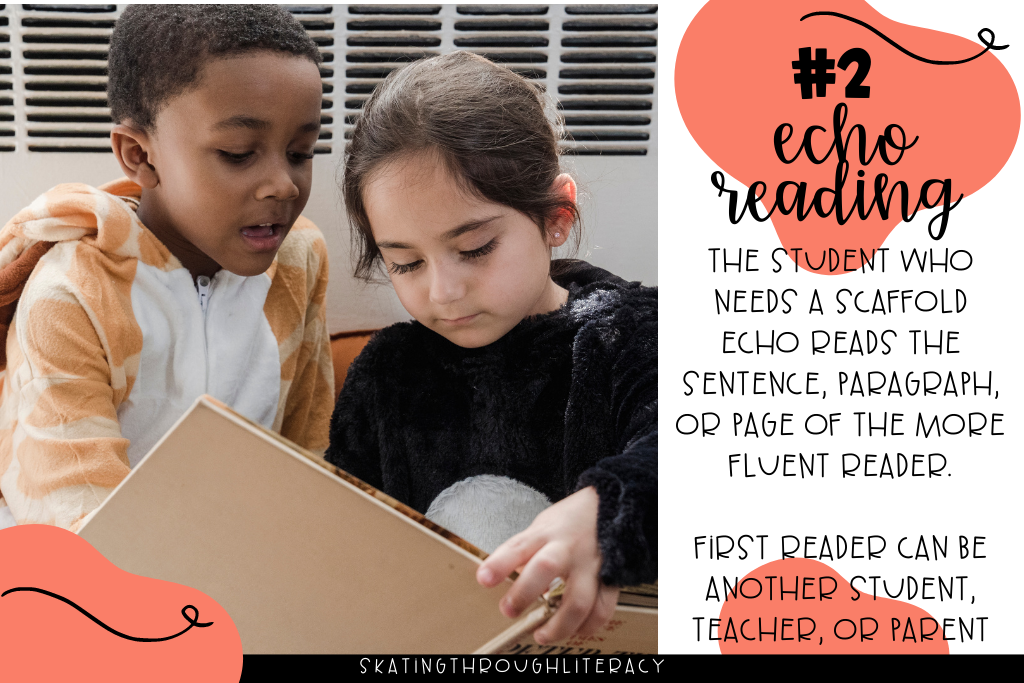
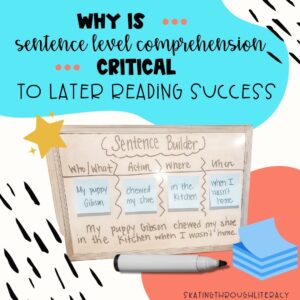
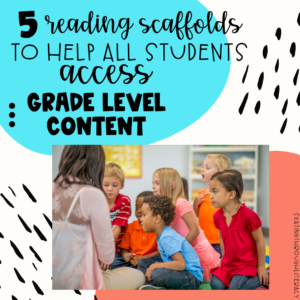
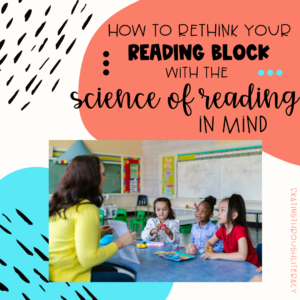

One Response
Cheers